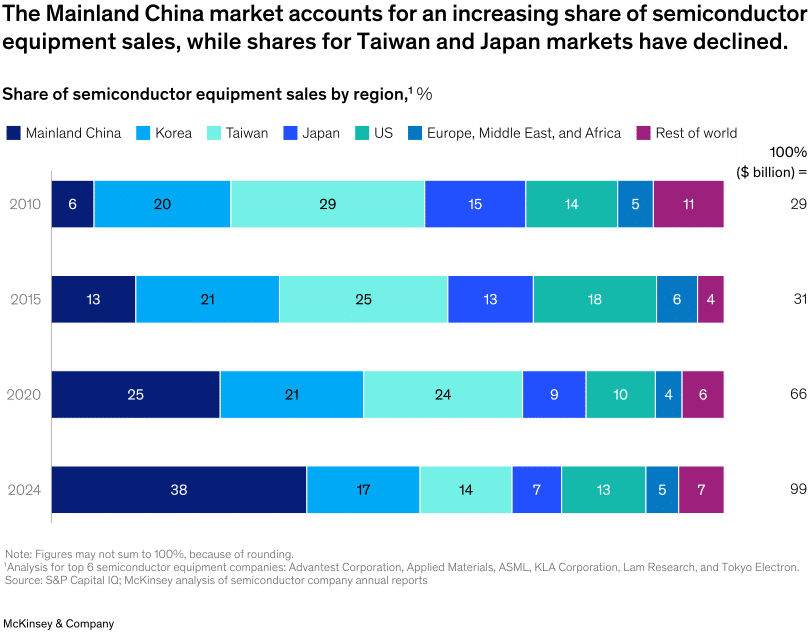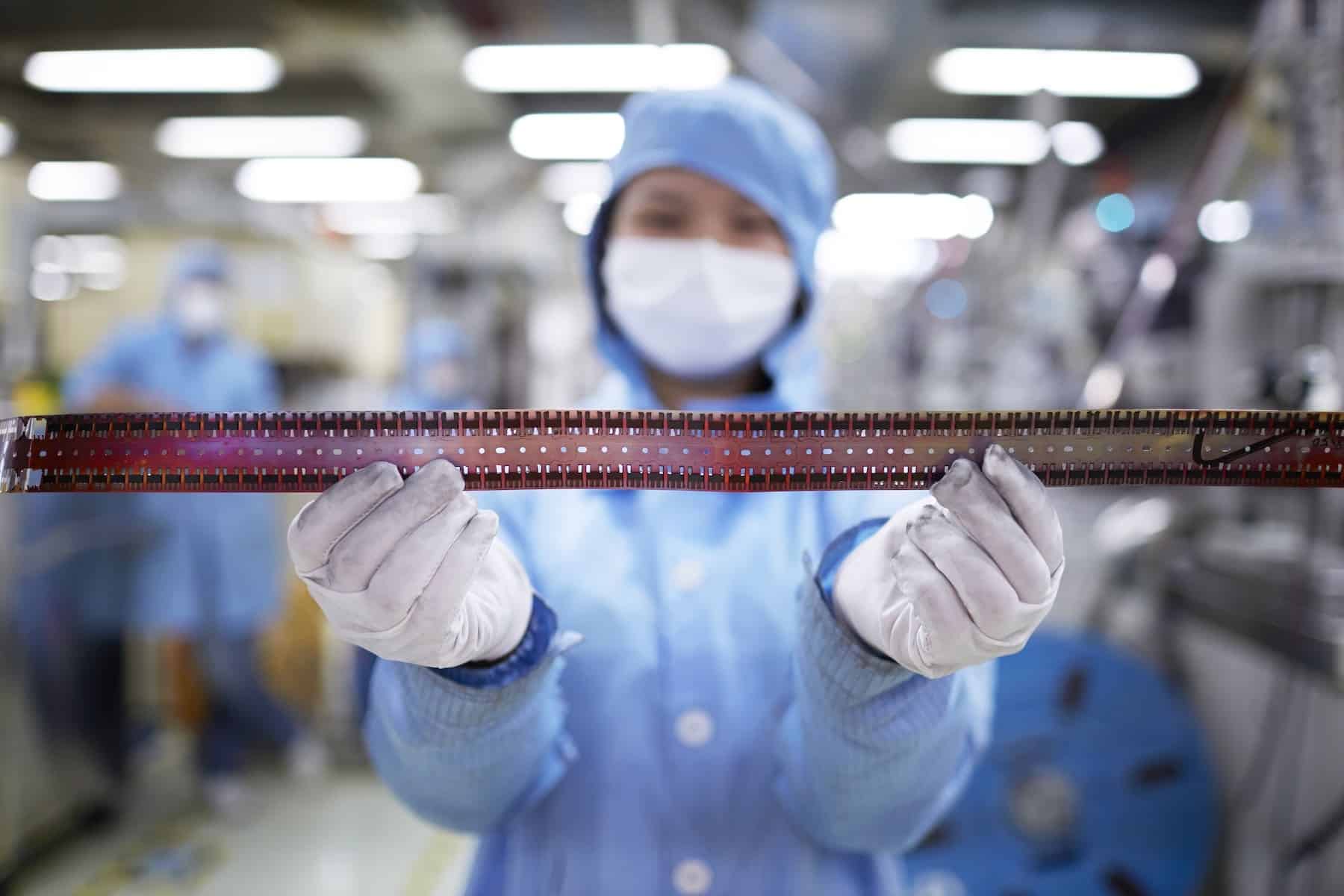The rise of China as a semiconductor power is reshaping the global balance, as the United States and its allies seek ways to contain its advance.
China has crossed a new threshold in the global semiconductor industry: it now accounts for 38% of chip manufacturing equipment, according to a recent McKinsey report. This figure not only confirms the rapid progress of the Asian giant but also positions it ahead of South Korea, the United States, and Europe combined in installed capacity.
The report, which analyzes the period from 2010 to 2024, describes a profound transformation in the sector. In just 14 years, China has gone from representing 6% of the global manufacturing equipment market to being the undisputed leader. This expansion takes place alongside the development of its own semiconductor ecosystem, increasingly less dependent on the West, despite the sanctions imposed by the U.S. on key companies like Huawei and its subsidiary HiSilicon.
From Buyer to Manufacturing Power
China has stopped being just a buyer of chips and has begun to dominate production chains. Between 2010 and 2020, Beijing increased its share of the global equipment market from 6% to 25%, and by the end of 2024, it is expected to reach 38%, increasingly capturing orders from leading manufacturers of lithography machinery and advanced packaging systems.
This movement is not coincidental: the restrictions imposed by the U.S. on the export of critical technologies have accelerated the Chinese Communist Party’s plans for technological self-sufficiency. Massive purchases of machinery could also be linked to a strategy of preventive stockpiling in anticipation of new sanctions or restrictions on international trade.
The Rest of the World on Edge
As China advances, other countries are reorganizing their positions. Taiwan has begun shifting some of its manufacturing capacity to the United States and Europe, Japan has maintained limited growth in new factories—beyond the Rapidus project—and the United States continues to invest billions through the CHIPS Act to reindustrialize the sector.
However, according to McKinsey, China’s pace is such that it could reach 50% of global manufacturing equipment by 2030 if it maintains its 9% annual growth rate. This concentration of capacity presents a new geopolitical and economic landscape.
A Divided Industry
Although the sector has experienced a global recovery after the 2022-2024 crisis, McKinsey warns that profitability is increasingly concentrated in a handful of companies. In 2024, the top 5% of companies in the sector—including NVIDIA, TSMC, Broadcom, and ASML— generated 100% of the aggregate economic profit, while the remaining 95% recorded losses or minimal profits.
China’s expansion in this industry, closely linked to the development of Artificial Intelligence, is also putting pressure on the margins of Western companies, which must compete with lower costs, a coordinated industrial policy, and a rapidly expanding domestic market, especially in emerging sectors like electric vehicles and commercial drones.

Can Sanctions Stop China?
The United States’ strategy to contain China’s technological rise has relied on sanctions, export controls, and agreements with allies. However, data suggests that these measures, while temporarily slowing down giants like Huawei, have not managed to halt the structural advance of the Asian country.
In fact, Beijing has responded with a stronger internal push, promoting investment in domestic semiconductors, launching technology substitution initiatives, and bolstering financial support for key companies in the sector.
It is expected that by early 2026, the first tangible results of the real impact of tariffs and restrictions promoted by the Trump Administration and its successors will begin to emerge. But for now, China is leading a race that is redefining the global landscape.
The Future Lies in Silicon
The semiconductor sector could reach $1.3 trillion in revenues by 2030, according to estimates from McKinsey. Much of that growth will be driven by artificial intelligence, cloud computing, and the expansion of hardware for data centers. But it will also depend on who controls the critical production tools.
With an increasingly interconnected ecosystem, China’s dominance in manufacturing equipment carries not only economic implications but also geopolitical and strategic ones. The competition is no longer just about making chips; it’s about deciding who sets the rules in the digital age.
Will the United States and its allies be able to respond with the same speed? Or will China consolidate its supremacy in the technological foundation of the future? The next decade will be decisive.
Source: mckinsey

